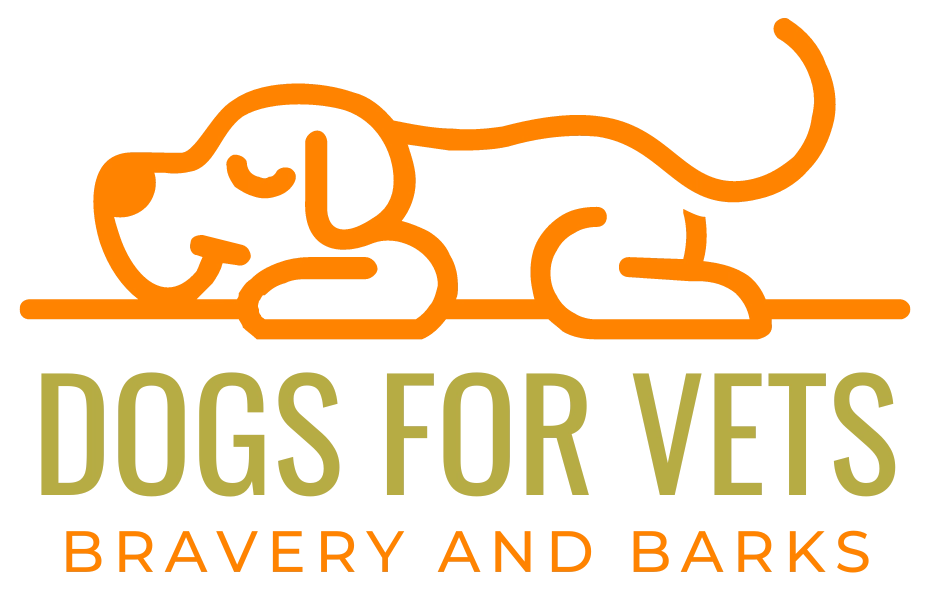This post may contain ads and affiliate links and we may earn a small commission when you click on the links at no additional cost to you. As an Amazon Affiliate, we earn from qualifying purchases. You can read our full disclaimer here.
Goldendoodle Coat Types and Care: A Guide to Grooming and Maintenance
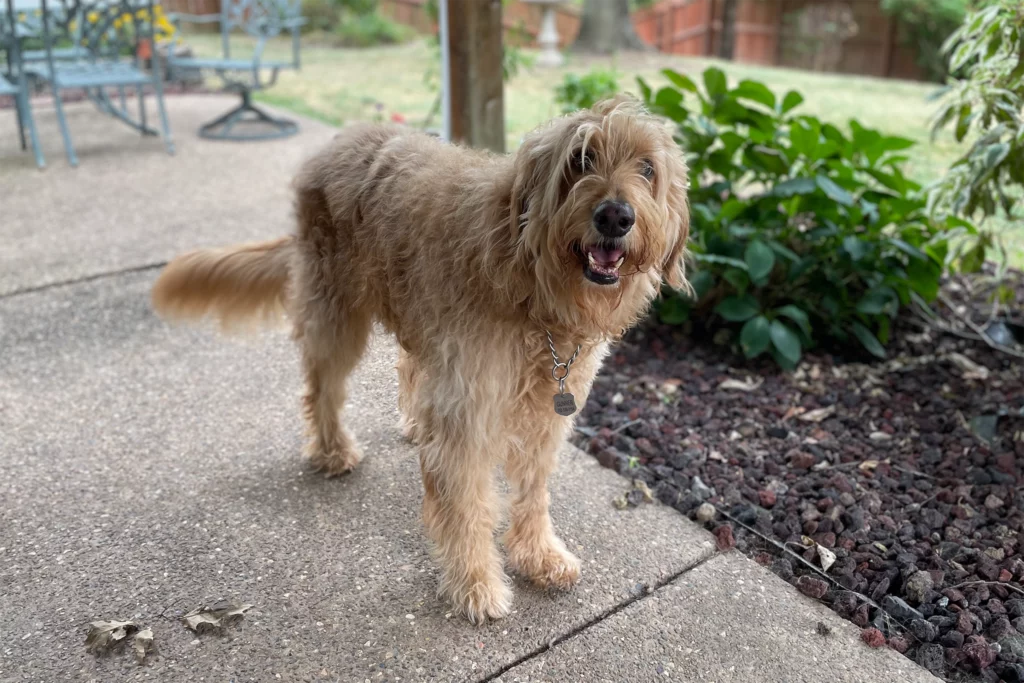
When it comes to Goldendoodle coat types and care, there’s a lot to talk about!
These adorable dogs get their unique looks from their Golden Retriever and Poodle parents, which means their coats can be pretty varied.
Some Goldendoodles have curly coats, some have wavy ones, and others have straighter hair. This mix-and-match of coats isn’t just about good looks; it also means that each Goldendoodle might need different kinds of grooming and care.
So, whether your doodle has tight curls or loose waves, knowing how to look after their specific coat type is key to keeping them looking and feeling great.
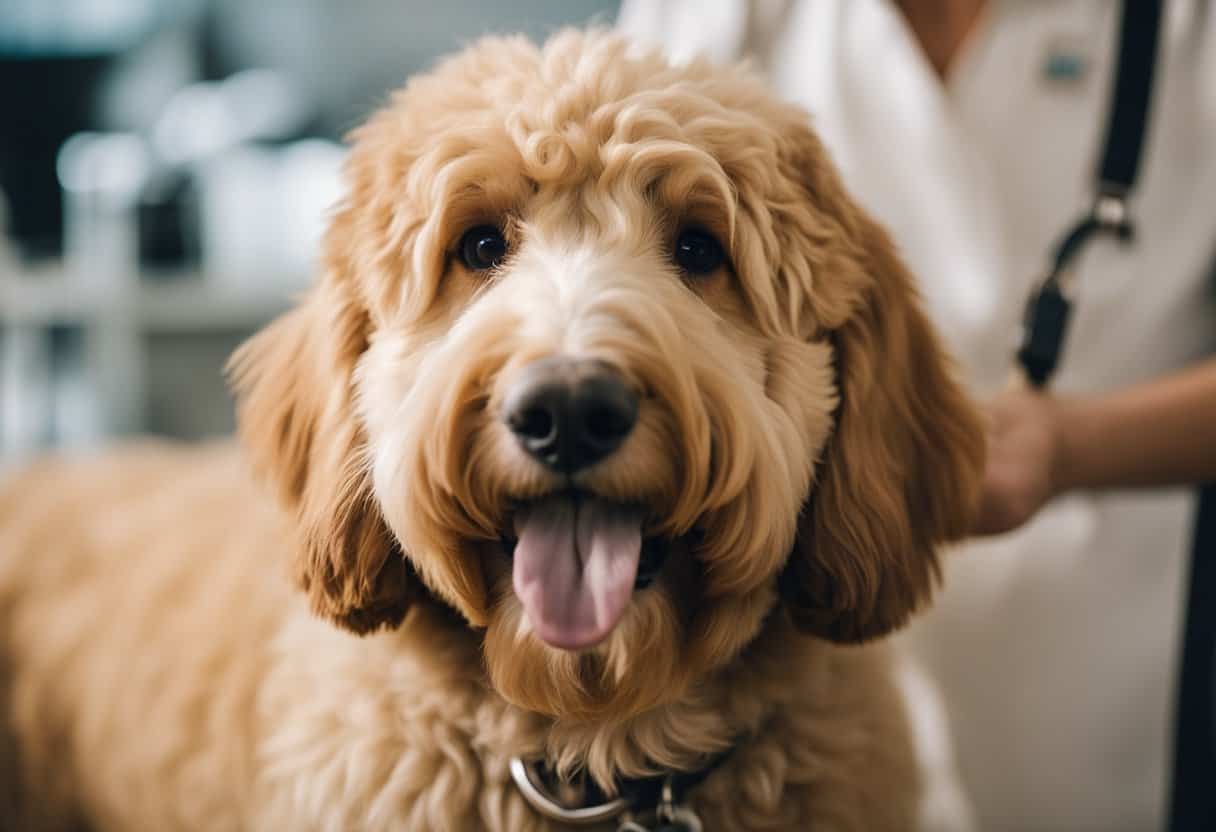
Understanding your Goldendoodle’s coat type is essential for proper care. Whether your dog has a wavy, curly, or straight coat, each comes with its own advantages and specific maintenance routines.
Caring for your Goldendoodle’s coat isn’t just about keeping them looking their best; it also has implications for their health and comfort.
Key Takeaways of Goldendoodle Coat Types and Care
- Goldendoodle coats come in various textures, each requiring specific grooming methods.
- Knowledge of your Goldendoodle’s generation and genetics can guide effective coat care.
- Regular and appropriate coat maintenance ensures the long-term health and comfort of your Goldendoodle.
Understanding Goldendoodle Generations
In exploring Goldendoodle generations, your comprehension of their genetic makeup is crucial for understanding their coat types. Each generation has distinct characteristics that are directly influenced by their lineage.
Defining F1, F1B, F2, and Multigenerational Goldendoodles
F1 Goldendoodles are the first generation, resulting from breeding a purebred Golden Retriever with a purebred Poodle. Their coats are typically a mix of their parents’, with no guarantee of being hypoallergenic or non-shedding.
F1B Goldendoodles are the result of breeding an F1 Goldendoodle back to a purebred Poodle, enhancing the Poodle’s hypoallergenic traits.
In F2 Goldendoodles, two F1 Goldendoodles are bred together, increasing the variation in coat types and shedding properties.
When you reach Multigenerational Goldendoodles, these are bred from F2 or higher generation Goldendoodles. Their breeding is aimed at stabilizing traits, particularly coat type, to achieve more predictability in terms of shedding and allergenic properties.
The Genetics Behind Goldendoodle Coat Types and Care
Goldendoodle coats are governed by several genes, with KRT71 and FGF5 playing significant roles in the texture and length of the fur.
The KRT71 gene affects the curliness of the coat, with the curly coat trait often seen as a dominant gene.
Alternately, the FGF5 gene influences the growth and length of the coat.
Understanding the influence of genes on the appearance of your Goldendoodle’s coat can be traced back to whether a gene is dominant or recessive. A recessive gene must be inherited from both parents to appear in the offspring, whereas a dominant gene can manifest if present in just one parent.
This distinction is vital in predicting the coat type of any particular Goldendoodle generation.
Goldendoodle Coat Types and Care
Goldendoodles, a popular crossbreed between Golden Retrievers and Poodles, inherit a variety of coat types. The specific coat your Goldendoodle has can significantly impact both appearance and grooming requirements.
Straight Coats
Straight coats on Goldendoodles are less common and resemble the flat, smooth coat of a Golden Retriever. This type of coat is relatively easy to care for, usually requiring regular brushing to remove loose fur and minimize shedding.
Wavy Coats
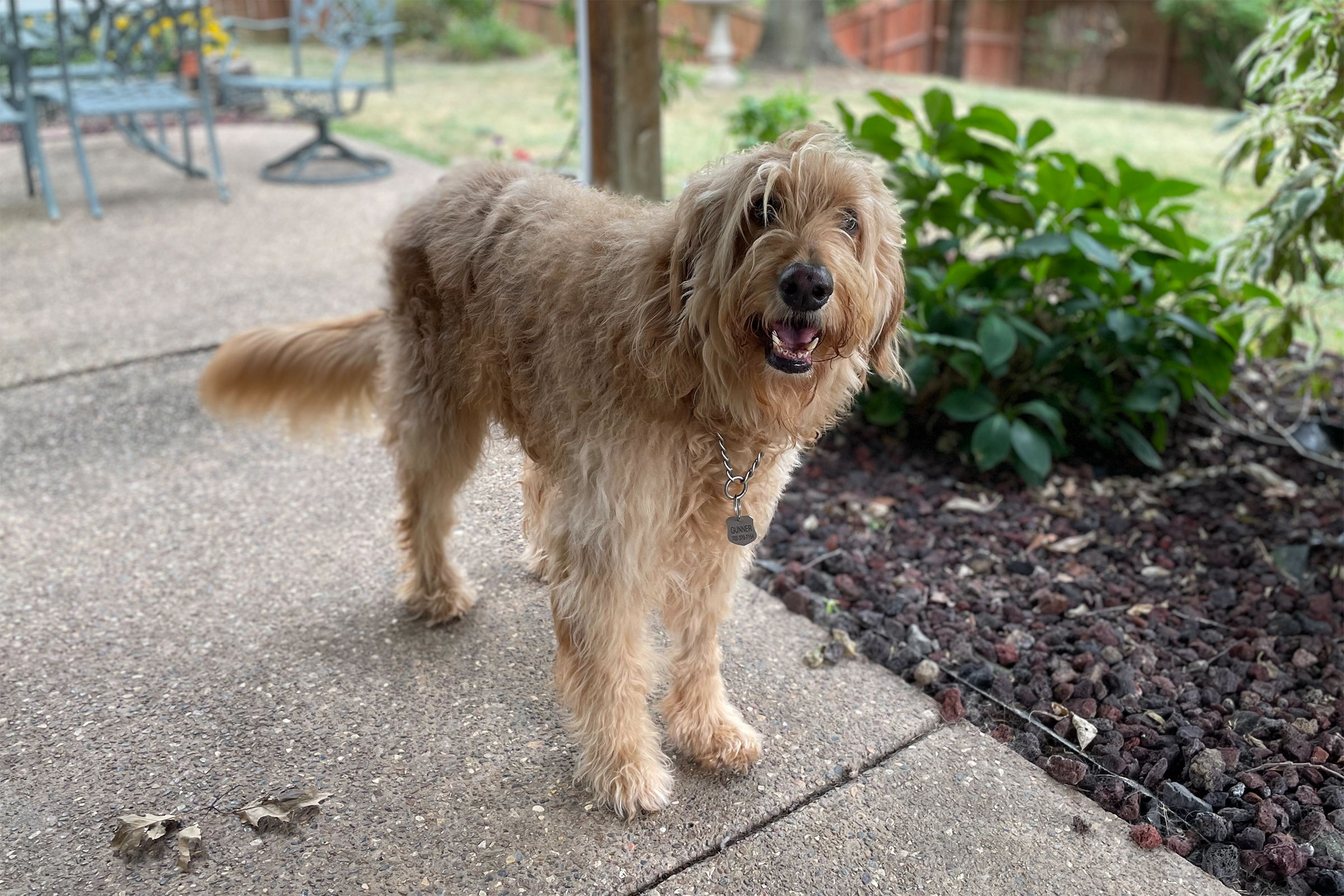
Wavy coats are a hallmark of many Goldendoodles, often considered the classic “teddy bear” look. This type of coat, a mix between the Poodle’s curls and the Golden Retriever’s straight coat, strikes a balance that typically requires moderate grooming efforts.
Careful attention to brushing and the occasional trim can help to prevent matting and tangles in these wavy coats.
Curly Coats
Curly coats in Goldendoodles, influenced by the Poodle’s curl gene, are dense and can appear similar to lamb’s wool. If you have a Goldendoodle with a curly coat, you’ll encounter the highest level of grooming needs to maintain the coat and prevent matting.
Regular, thorough grooming sessions, including brushing and professional grooming, are essential to keep a curly coat in optimal condition.
Genetic Markers and Coat Determinants

Identifying the genetic markers linked to coat types is crucial for predicting the appearance and care needs of your Goldendoodle.
Understanding the interplay of dominant and recessive genes, as well as the specific DNA testing available, can help you make informed decisions.
The Role of Dominant and Recessive Genes
Your Goldendoodle’s coat type is heavily influenced by the interaction between dominant and recessive genes. A dominant gene will express its trait even if only one copy is present, while a recessive gene requires both copies to be identical for the trait to manifest.
For example, the curly coat gene is dominant; thus, if your dog inherits this gene from even one parent, it is likely to display a curly coat.
DNA Testing for Goldendoodle Coat Types and Care
DNA testing can provide a valuable insight into your Goldendoodle’s genetic makeup. By analyzing your pet’s DNA, these tests can determine the presence of specific coat-related genes.
This knowledge allows you to understand the type of coat your Goldendoodle will have, making grooming and care more tailored to your dog’s needs.
- Available Tests:
- Coat type gene (Curl)
- Furnishings gene
- Shedding gene
The Importance of Furnishings Gene
The furnishings gene is responsible for the distinctive facial hair that Goldendoodles often display, which includes the presence of eyebrows and a mustache, giving them their characteristic friendly appearance.
Furnishings are typically associated with a non-shedding coat and require a specific type of care to keep them looking their best. It is considered a dominant trait, meaning that the likelihood of your Goldendoodle having furnishings is high if one of its parents carried the gene.
Goldendoodle Coat Types and Care and Maintenance
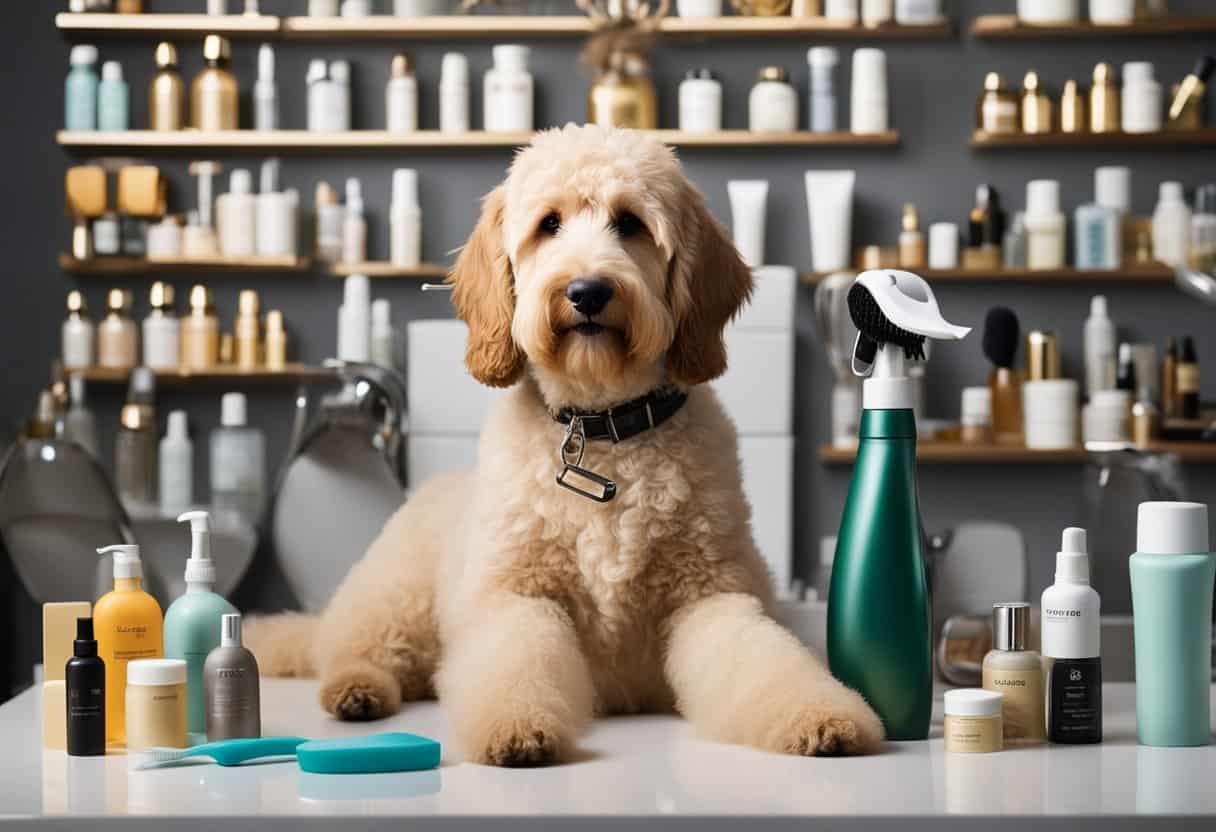
Proper coat care is essential for keeping your Goldendoodle’s fur in top condition. By incorporating regular maintenance routines, you can prevent matting and keep your furry friend comfortable and tidy.
Regular Brushing and Combing
Your Goldendoodle’s coat requires regular brushing to prevent tangles and mats. At least three times a week, use a slicker brush to gently remove loose hair and a pin brush for finishing touches:
- Slicker Brush: Useful for detangling and removing loose fur.
- Pin Brush: Ideal for smoothing the coat and giving it a neat appearance.
Be gentle to avoid causing discomfort, and pay special attention to areas that mat easily, like under the arms and around the ears.
Bathing and Cleaning Tips
Bathing your Goldendoodle is crucial for maintaining a clean coat but should be done sparingly to avoid drying out the skin:
- Frequency: Bathe your dog every three months or when noticeably dirty.
- Shampoo: Use a dog-specific shampoo that is gentle on the skin.
- Drying: After washing, thoroughly dry the coat with towels or a low-heat hairdryer to prevent dampness-related issues.
Remember to clean your dog’s ears and rear end for comprehensive hygiene.
Trimming and Grooming Sessions
Regular grooming sessions, including haircuts and trims, will keep your Goldendoodle looking neat:
- Home Maintenance: Between professional grooming, trim around the eyes, paws, and sanitary areas to maintain visibility and cleanliness.
- Professional Groomer: Schedule visits every 6-8 weeks for a full-body haircut, which can reduce the chances of matting and overheating.
Choose a groomer experienced with Goldendoodles to ensure the best results for your dog’s specific coat type.
Addressing Common Coat Issues
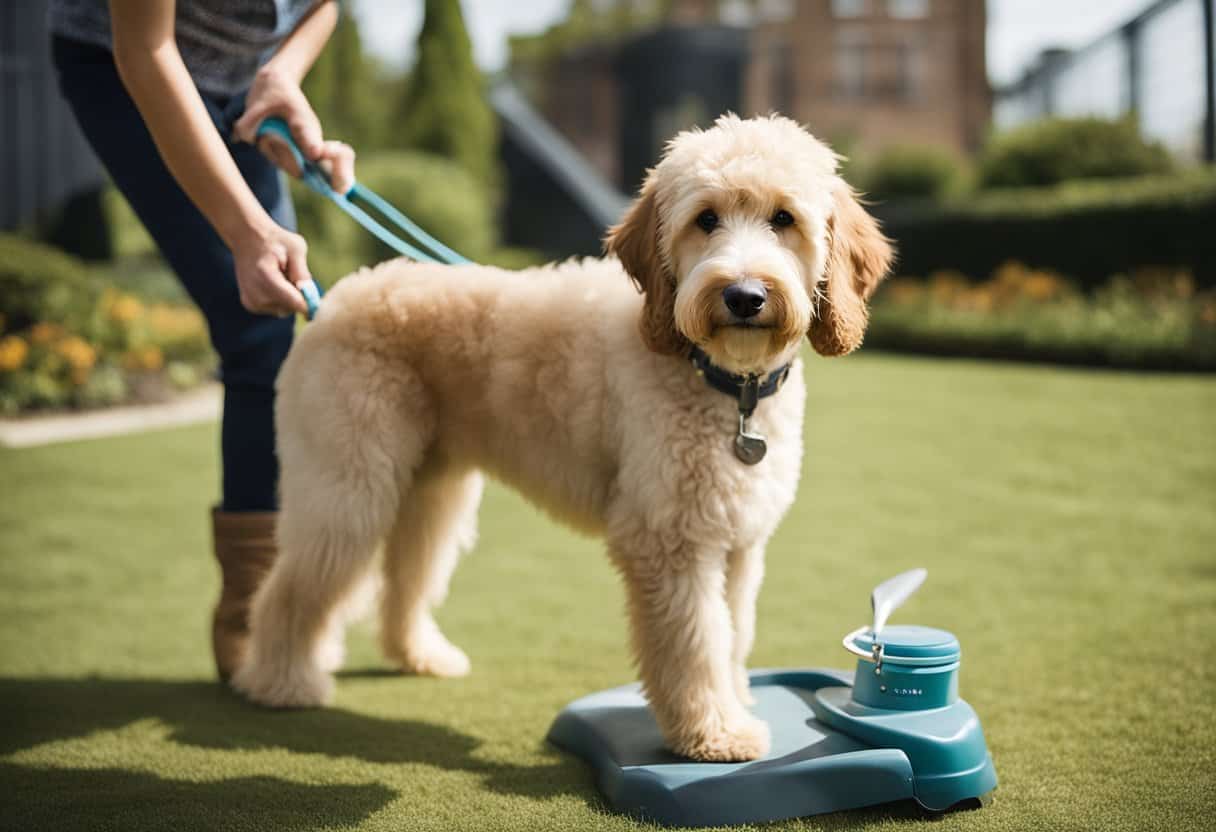
Goldendoodle coats vary and can present different challenges, including matting and sensitivity. Proper grooming and knowledge can help mitigate these issues.
Dealing with Matting and Tangles
Your Goldendoodle’s coat may be prone to matting and tangles, especially if it inherits the curlier poodle coat. Regular brushing is essential to prevent mats from forming. Using a detangler can be beneficial before brushing to ease out knots without causing discomfort.
Ensure that you’re using the right tools, such as a slicker brush or a wide-toothed comb, to effectively manage and maintain the coat’s health.
Improper Coat and Allergies
An improper coat refers to a Goldendoodle’s coat that does not meet the breed standard, which might be too thick or improperly textured, potentially leading to skin issues and allergies.
Be mindful of the signs of allergies, like excessive scratching or red skin. Regular grooming not only helps with identifying any irregularities in the coat but also with reducing allergens that can cause reactions.
Additionally, although Goldendoodles are often praised for being hypoallergenic, no dog breed is completely free of allergens.
Proper hygiene and frequent cleaning of your dog’s living spaces can minimize allergic reactions.
Styling and Appearance Modification

Goldendoodle grooming is not solely for aesthetic pleasure; it is essential for maintaining the health of their unique coats. Your choices directly impact the maintenance required and your dog’s appearance.
Choosing the Right Haircut
When determining the most suitable haircut for your Goldendoodle, it is crucial to consider both their lifestyle and the type of coat they have.
Teddy bear haircuts are popular, maintaining about 1-2 inches of length for a plush, rounded look, especially around the face. If you lead an active lifestyle with your pet that involves a lot of outdoors, a shorter cut such as the summer cut might be preferable to prevent matting and reduce the need for brushing.
Your Goldendoodle’s coat type, whether fleece or another, affects how their hair grows and responds to styling.
Fleece coats, known for their soft, wavy texture, may require specific grooming techniques to achieve a consistent appearance.
You should consult with a professional groomer who has experience with Goldendoodles to ensure that the haircut is appropriate for their coat and will not lead to discomfort or health issues like overheating.
Understanding the Change in Coat
Goldendoodles undergo a noticeable transition from their puppy coat to their adult coat, which typically starts to occur between six and twelve months of age.
During this period, you may observe changes in texture and thickness as the softer puppy fur is replaced with the denser adult coat. The change can also include variations in color and pattern.
Managing this coat change is fundamental for avoiding mats and tangles. Regular grooming and appropriate brushing techniques catered to the adult coat’s texture can ease this transition.
It’s important to adapt your grooming routine as your Goldendoodle’s coat evolves, as maintenance for a puppy coat may differ greatly from the needs of an adult coat.
Specific Coat Care for Different Sizes
Goldendoodle coats vary not only in color and texture but also require different maintenance practices depending on their size. The grooming needs of mini Goldendoodles can differ significantly from their larger counterparts.
Coat Care for Mini Goldendoodles
Mini Goldendoodles possess a unique charm, with coats that may either be curly, wavy, or straight. Due to their smaller size, matting and tangling can occur more easily, demanding frequent brushings. Here’s a simple guide:
- Brushing: At least three times a week to prevent mats.
- Bathing: Monthly, or as needed, with a gentle dog-specific shampoo.
Despite their often low to non-shedding coats, mini Goldendoodles can still accumulate dirt and debris close to their skin, which highlights the importance of a consistent grooming routine.
Coat Maintenance for Larger Sizes
Larger Goldendoodles, while similar to their mini counterparts in coat type, have more surface area to groom, making routine maintenance slightly more time-consuming. The key for keeping their coat in top condition includes:
- Brushing: A sturdy, wide-toothed comb for weekly sessions.
- Bathing: Every 4-6 weeks or when the coat becomes dirty.
Regular brushing helps manage shedding and ensures their longer fur remains free of tangles. For larger Goldendoodles, the balance of care is skewed towards managing shedding and maintaining overall coat health.
Goldendoodle Coat Types and Care: Seasonal Considerations
As the seasons change, the coat care routine for your Goldendoodle should be adjusted to maintain their health and comfort.
Seasonal shedding, drying, and trimming all vary with temperature and humidity changes, demanding a flexible grooming approach.
Summer Care and Cooling
During summer, your Goldendoodle may experience more shedding as their coat adjusts to the warmer weather. To assist in cooling:
- Brushing: Increase the frequency of brushing to help remove loose fur, enhancing air circulation near the skin.
- Trimming: Consider a shorter coat length to prevent overheating, but avoid shaving to protect their skin from sunburn.
- Maintenance: Regularly check for ticks and fleas, as they’re more common in summer.
Winter Protection and Warmth
In winter, your Goldendoodle’s coat will provide insulation, but it also requires care to combat the cold:
- Drying: Thoroughly dry your dog’s coat after exposure to snow or rain to prevent chills.
- Coat Length: Keep the coat slightly longer to retain warmth, particularly for curly coats which offer more insulation than wavy coats.
- Winter Gear: Use dog-appropriate outerwear for extreme conditions to protect your Goldendoodle from the elements.
The Long-Term Impact of Goldendoodle Coat Types and Care
Proper maintenance of your Goldendoodle’s coat is more than just a cosmetic concern; it’s essential for their overall well-being. Consistent grooming practices ensure a healthy, manageable, and happy grooming experience.
Health Benefits of Regular Grooming
By regularly grooming your Goldendoodle, you prevent mats and tangles that can cause skin irritation and infections.
Frequent brushing removes dead hair and skin, promoting better air circulation to the skin. This practice also allows you to spot any abnormalities like lumps, parasites, or wounds early on, leading to quicker treatment and less discomfort for your pet.
Behavioral Aspects of Grooming
When your Goldendoodle becomes accustomed to a regular grooming routine, it often leads to calmer, more cooperative behavior during grooming sessions.
Positive associations with grooming can make maintenance a bonding experience. Regular handling during grooming also desensitizes your dog to being touched, which can make vet visits and other handling situations less stressful.
Frequently Asked Questions about Goldendoodle Coat Types and Care
Navigating the care and specifics of Goldendoodle coat types can be complex. These FAQs hone in on essential insights to help you understand and manage your Goldendoodle’s fur.
How can you predict the coat type of a Goldendoodle puppy?
You can often predict the coat type of a Goldendoodle puppy by examining the fur of the parents. If both parents have a similar coat type, there’s a higher chance the puppy will inherit that coat.
However, due to the mix of Poodle and Golden Retriever genes, predicting the exact coat type can still be a challenge.
What are the key differences between wavy and curly Goldendoodle coats?
Wavy Goldendoodle coats, often referred to as “fleece” coats, are characterized by gentle waves and are typically low to non-shedding.
Curly coats are more akin to Poodle fur, featuring tight curls and a plush texture, known for being hypoallergenic.
When does a Goldendoodle’s adult coat typically start to develop?
A Goldendoodle’s adult coat usually starts to develop between 6 to 12 months of age. During this time, they may shed their puppy coat, which can result in a change in texture and color of the fur.
How should you care for a straight-haired Goldendoodle?
For straight-haired Goldendoodles, regular brushing a few times a week helps prevent mats and tangles. Their coat is more similar to that of a Golden Retriever and, as such, may require more frequent grooming to manage shedding.
What is an ‘improper coat’ in Goldendoodles, and how common is it?
An ‘improper coat’ in Goldendoodles is a genetic variation where the dog lacks the furnishings (longer facial hair) typical of the breed.
It’s not overly common, and while it doesn’t affect the dog’s health, it does give a different appearance more reflective of a flat or straight coat.
How do flat coats differ from straight coats in Goldendoodles?
Flat coats in Goldendoodles lie close to the body and are typically smoother, with less fluffiness compared to straight coats.
Straight coats may have a slight wave, giving them a fuller look, and generally require more maintenance due to their tendency to mat more easily.
Conclusion to Goldendoodle Coat Types and Care
Goldendoodle coats vary significantly, so identifying your dog’s specific type is crucial for proper grooming. You must tailor your care routine to match the needs of your Goldendoodle’s coat, which could be straight, wavy, or curly.
Regular grooming is essential, not only for maintaining the appearance but also for the health of your dog’s skin and coat.
Establish a grooming regimen that includes brushing, bathing, and professional grooming visits. Brushing should be done several times a week, and professional grooming is recommended every 6-8 weeks.
Choose the right tools for the job; a slicker brush and a wide-toothed comb are indispensable for detangling and maintaining a healthy coat.
Finally, be attentive to changes in your dog’s coat or skin, as these could indicate health issues. By staying informed and proactive in your Goldendoodle’s coat care, you can ensure a happy, healthy, and well-groomed companion.
Remember, the right care leads to a lustrous, comfortable coat and a joyful, energetic dog.
| Coat Type | Brushing Frequency | Professional Grooming |
|---|---|---|
| Straight | 1-2 times per week | Every 8-10 weeks |
| Wavy | 2-3 times per week | Every 6-8 weeks |
| Curly | 3-4 times per week | Every 4-6 weeks |
Your efforts in grooming translate directly to your Goldendoodle’s overall well-being.
-
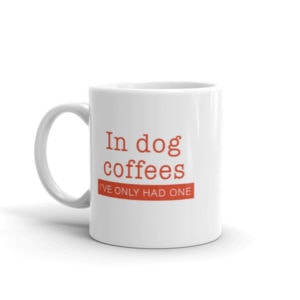
Coffee Mug – In Dog Coffees I’ve Only Had One
$11.95 – $14.95 Select options This product has multiple variants. The options may be chosen on the product page
